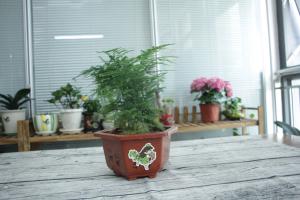Can I Plant Trees on Public Land?
Planting trees is a great way to do your part for the environment and make your community a better place. However, many people wonder if they are allowed to plant trees on public land such as parks, streets, or other areas owned by the government. The answer is not straightforward and depends on several factors.
The Legal Implications of Planting Trees on Public Land
In most cases, it is illegal to plant trees on public land without permission from the relevant authorities. Governments have specific guidelines and regulations in place to manage public land, and planting trees without permission can lead to fines or other legal consequences. However, in some cases, governments or local authorities may have specific programs or initiatives that encourage individuals or groups to plant trees on public land, and they may provide assistance in planting and maintaining them.
Getting Permission to Plant Trees on Public Land
If you want to plant trees on public land, the first step is to contact the relevant government agency or local authority and find out their policies and guidelines. Some will have specific programs or initiatives for tree planting, while others may not allow it at all. You will also need to provide a detailed plan for your tree planting project, including the species and number of trees, the location, and the maintenance plan.
The process of getting permission to plant trees on public land can be time-consuming and involve various administrative procedures. You may need to apply for permits, attend meetings, and consult with experts such as arborists or environmentalists to ensure that your project meets all the necessary environmental and safety standards. Depending on the location and scope of your tree planting project, you may also need to obtain public liability insurance to protect yourself against potential legal claims or damages.
The Benefits of Planting Trees on Public Land
Planting trees on public land can bring numerous benefits to your community and the environment. Trees are natural air filters, absorbing carbon dioxide and other pollutants from the air and producing oxygen. They also provide shade, reduce noise pollution, and create a sense of beauty and tranquility in public spaces. In urban areas, where green spaces are often limited, planting trees can help to mitigate the heat island effect and reduce the impact of climate change.
Moreover, planting trees on public land can bring people together and create a sense of community pride and ownership. When individuals and groups work together to plant and maintain trees, they form bonds and a sense of shared responsibility for their local environment. This can lead to greater social cohesion and reduce crime and other social problems.
Conclusion
Planting trees on public land can be a rewarding and beneficial project, but it requires careful planning and cooperation with government agencies and local authorities. By following the necessary procedures and guidelines, you can create a lasting legacy for your community and contribute to a healthier and more sustainable environment.

 how many times do yo...
how many times do yo... how many planted tre...
how many planted tre... how many pine trees ...
how many pine trees ... how many pecan trees...
how many pecan trees... how many plants comp...
how many plants comp... how many plants can ...
how many plants can ... how many plants and ...
how many plants and ... how many pepper plan...
how many pepper plan...

































